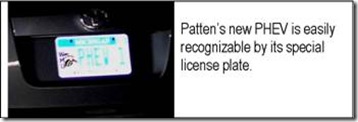Sunseeker 295 has been refurbished and is now on display at the Kalamazoo Air Zoo Space Annex. It was recently returned to WMU after being exhibited for the past 5 years at the Gilmore Car Museum.
Sunseeker 295 is the solar-powered vehicle that WMU entered in the 2001 American Solar Challenge (ASC), which followed Route 66 from Chicago to Los Angeles.
In ASC 2001, Sunseeker 295 took 5th place in stock class and 23rd overall. It was also featured in a National Geographic solar-car documentary that aired on cable network.
Abraham Poot, adviser to Sunseeker, said that the car played a major part of the history of WMU’s solar vehicles.
Sunseeker 295 was originally Sunseeker 93, built for the 1993 GM Sunrayce, a race from Dallas, Texas, to Minneapolis, Minnesota. Overcast and rainy weather hampered all 34 solar team entries, and Sunseeker 93 finished 18th .
Sunseeker 93 had a strong chassis and served as the base for Sunseeker 95, which featured improvements in the solar array, power train, and aerodynamics. With a new Bronco Gold paint job, Sunseeker 95 placed 8th of 38 cars in the1995 Sunrayce, which ran from Indianapolis to Golden, Colorado.

Sunseeker 295 on display at the Kalamazoo Air Zoo Annex
Sunseeker 95 was put on display before the 1997 race and used that year as an educational tool in every town along the race route. It was retired after the 1997 race and loaned to Gilmore Car Museum for exhibition in the Steam and Electric Vehicle barn.
For the 2001 competition, the ASC’s 2400-mile challenge along Route 66 became the longest solar race in the world.
Problems with the modification of the 1999 solar car prompted WMU to pull Sunseeker 95 out of retirement. With a new solar array, carbon-fiber wheels, and new battery pack, Sunseeker 295 was born.
After the 2001 race, Sunseeker 295 was used extensively for recruiting and education. The car visited numerous schools in West Michigan, participated in energy events, took part in parades, and appeared at special WMU events. Sunseeker 295 was retired after a new 2003 Sunseeker was built.
Last November Sunseeker 295 was moved from the Gilmore Museum to the Kalamazoo Air Zoo. “Over the past 19 years, more than a million people have seen the WMU solar cars,” Poot said. “Sunseeker 295 played a major role.”
For additional information, see the Sunseeker web site: www.wmich.edu/sunseeker or contact the Sunseeker team at: sunseeker@wmich.edu






